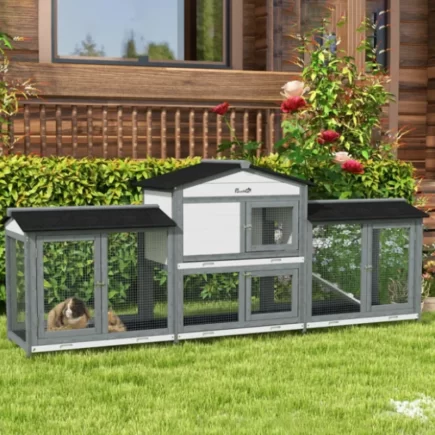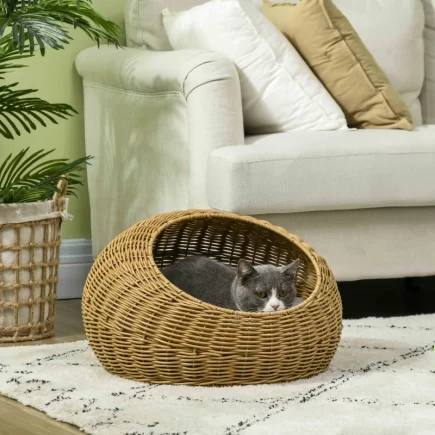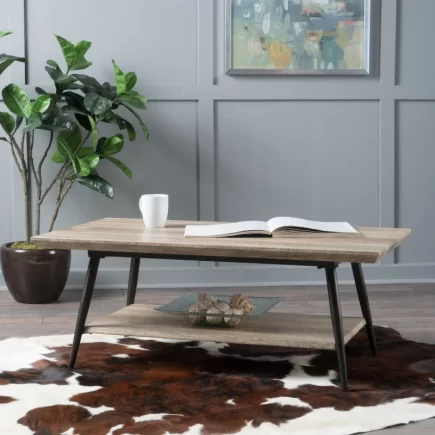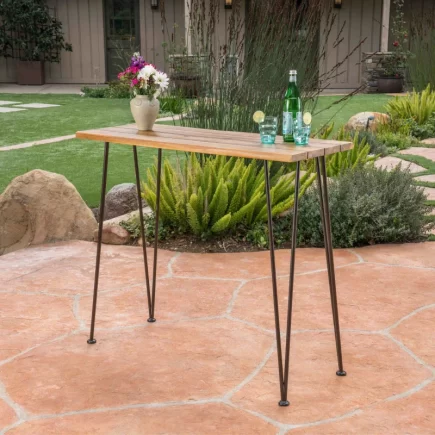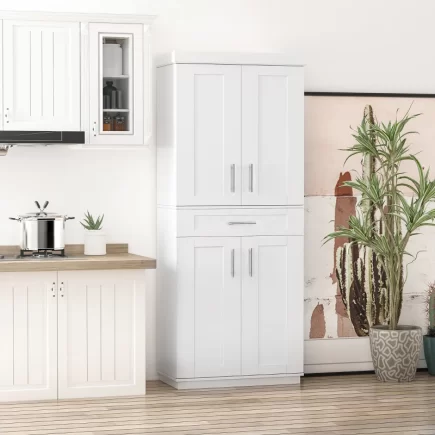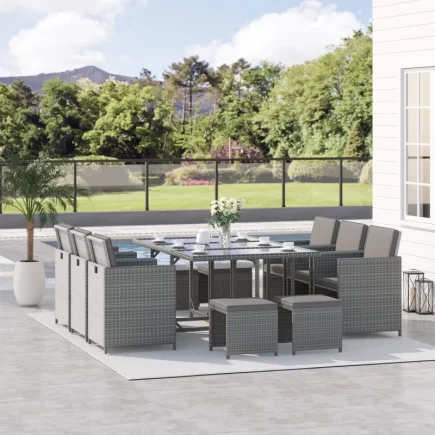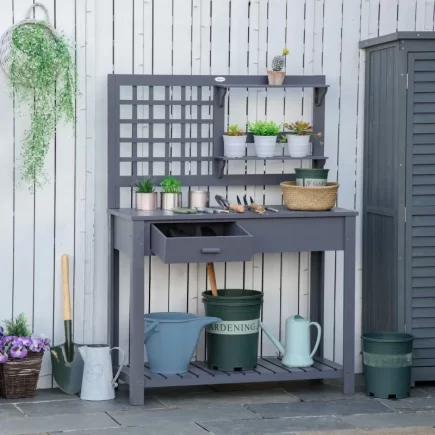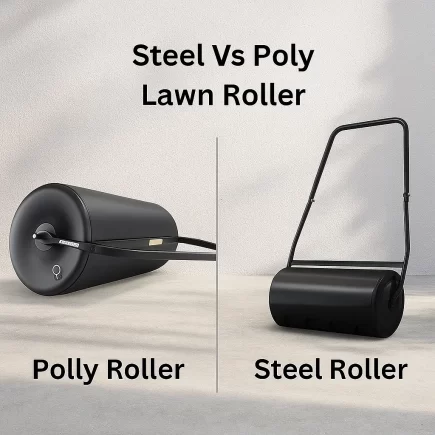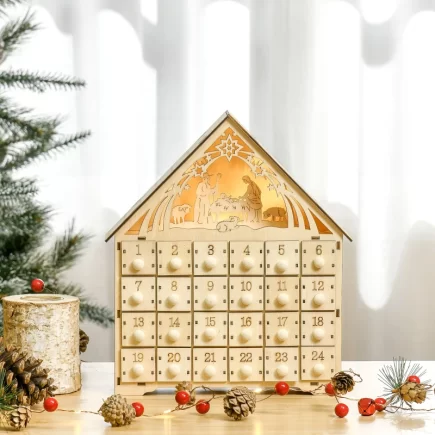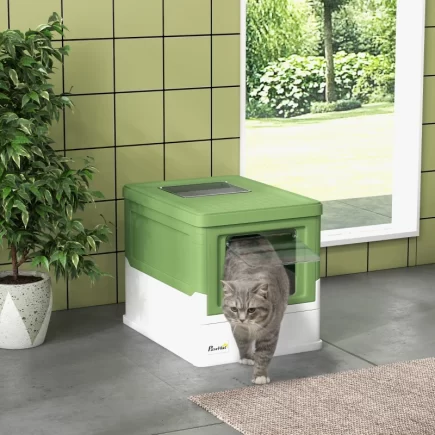Wine storage is essential for any wine lover, but the choice between a wine rack and a wine cabinet often leaves many wondering which is best for their needs. Both options are designed to store wine, but they vary greatly in terms of design, functionality, and long-term benefits.

In this article, we’ll break down the key differences between a wine rack and a wine cabinet, helping you make an informed decision based on your storage needs, style preferences, and budget.
Understanding the Basic Purpose of Wine Storage
Wine Rack: Practical and Accessible Storage
A wine rack serves a simple purpose: it holds bottles of wine horizontally, which helps to keep the cork moist and prevent air from entering the bottle. This ensures that the wine remains in good condition for a short period.
Wine racks are typically designed for convenience, offering quick access to bottles while maintaining the wine’s quality over the short term.
Ideal For: Casual wine drinkers, people with limited storage space, and those who do not require climate control for long-term storage.
Wine Cabinet: Optimal Long-Term Storage
On the other hand, a wine cabinet is a more specialized storage unit that not only holds bottles of wine but also incorporates features designed to maintain ideal storage conditions. These cabinets often have built-in cooling systems and humidity control, ensuring that the temperature and moisture levels are perfectly regulated for long-term preservation of wine. A wine cabinet is ideal for those who wish to store their wine collection in optimal conditions over time.
Ideal For: Serious wine collectors and enthusiasts who need a controlled environment for storing wine for extended periods.
Design and Aesthetic Considerations
Wine Racks: Functionality First
Wine racks are designed with practicality in mind, focusing on ease of access and space efficiency rather than intricate designs or aesthetics. These racks come in a variety of shapes and sizes, from compact countertop models to larger, freestanding racks that can hold a larger number of bottles. Wine racks are usually made of materials such as wood, metal, or acrylic, and their open design allows you to view the bottles easily, making it quick to find the one you want.

Key Features:
- Simplicity: Focuses on providing a practical and functional storage solution.
- Visibility: Bottles are easily accessible and visible.
- Space-Saving: Wine racks are available in various sizes to fit in smaller spaces, making them ideal for apartments or homes with limited room.
Wine Cabinets: Elegant and Refined
Wine cabinets combine storage with aesthetic appeal. These cabinets are often crafted from high-quality wood and feature elegant glass doors or panels, making them a statement piece in your home. Wine cabinets come with the added benefit of being fully enclosed, which not only protects the wine but also adds a touch of sophistication to your living space.
Key Features:
- Luxury Design: Often crafted with attention to detail, wine cabinets serve as an elegant addition to your home decor.
- Size: Due to built-in cooling systems, wine cabinets tend to be larger and require more space for proper placement.
- Visibility and Style: Glass doors allow you to admire your collection while keeping bottles secure.
Storage Capacity and Organization
Wine Racks: Maximizing Storage for a Larger Collection
One of the most significant advantages of wine racks is their ability to store a large number of bottles. Whether you need a small countertop rack or a large, freestanding unit, wine racks come in many different configurations. The horizontal storage of wine bottles ensures the cork remains moist and protects the quality of the wine.
Key Benefits:
- Capacity: Can store large numbers of bottles, making it perfect for those with a large collection or frequent wine drinkers.
- Organization: While wine racks typically lack the organization of a wine cabinet, some designs allow for a functional yet neat arrangement of bottles.
Wine Cabinets: Specialized Storage with Limited Capacity
Wine cabinets, while offering less capacity than wine racks, excel in providing a climate-controlled environment. Many wine cabinets feature sections for red, white, and sparkling wines, allowing you to organize your collection by type and preserve them optimally. The size of the cabinet can vary, but it usually holds fewer bottles than a wine rack due to the added features like temperature control and separate compartments.

Key Benefits:
- Optimized Conditions: Many wine cabinets come with separate compartments for different wine types, helping to maintain the best conditions for each.
- Limited Capacity: While they hold fewer bottles, the cabinet’s focus is on quality, not quantity.
Climate Control: The Key to Long-Term Preservation
Wine Racks: No Climate Regulation
Wine racks offer no climate control. The wine stored in these racks is entirely dependent on the temperature and humidity of the room. This makes them ideal for short-term storage but less suitable for wines that need to be stored for long periods, as temperature fluctuations and dryness can damage the cork.
Key Considerations:
- Environment Dependent: The condition of wine stored on a rack is entirely dependent on the ambient temperature and humidity levels in the room.
- Short-Term Storage: Best suited for wines that will be consumed in the near future.
Wine Cabinets: Built-In Climate Control
Wine cabinets provide controlled storage environments with built-in cooling and humidity regulation. This allows wine to be kept at a consistent temperature, typically between 45-65°F, and at an appropriate humidity level to ensure the cork stays moist and the wine does not spoil. This makes wine cabinets perfect for long-term wine preservation.
Key Considerations:
- Consistent Temperature and Humidity: Ensures that your wine ages gracefully and retains its quality over time.
- Long-Term Storage: Ideal for collectors who want to store wine for years or decades.
Portability and Placement Flexibility
Wine Racks: Easy to Move and Position
Wine racks are lightweight and easy to move around, making them ideal for renters or those who prefer a more flexible storage solution. Whether placed on a countertop, in a closet, or in a dining area, wine racks can fit in small or tight spaces, offering portability and flexibility.

Key Advantages:
- Easy to Relocate: Perfect for those who need to move their storage solution frequently.
- Compact and Versatile: Can fit into various spaces, from kitchens to living rooms.
Wine Cabinets: Fixed Placement for Stability
Due to their size and built-in cooling systems, wine cabinets typically require a fixed location in your home. These cabinets are bulky and need ample space for proper ventilation and cooling. Before purchasing a wine cabinet, you’ll need to consider its placement carefully, as it requires both room for the cabinet itself and adequate airflow for the cooling system.
Key Advantages:
- Dedicated Space: Often requires a specific spot in your home, so it’s not as portable as a wine rack.
- Bulkier Design: Larger size and built-in cooling features require careful planning for placement.
Protection and Security
Wine Racks: Basic Protection
Wine racks offer limited protection for your bottles. Since the bottles are exposed, they are more susceptible to dust, spills, or accidental knocks. Wine racks do not shield bottles from light or fluctuating temperatures, which can compromise the wine’s integrity over time.
Key Considerations:
- Exposed Bottles: The open design means bottles are vulnerable to environmental factors such as light, dust, and temperature changes.
- Minimal Security: No lockable doors or shields to protect valuable bottles from theft or damage.
Wine Cabinets: Enhanced Protection
Wine cabinets provide enhanced protection due to their enclosed design and additional features. Some cabinets even come with lockable doors, offering security for valuable or rare collections. The controlled environment inside a wine cabinet helps protect the wine from dust, light, and temperature fluctuations, ensuring the wine stays in excellent condition.

Key Considerations:
- Enclosed Design: Shields your wine from light, dust, and other potential contaminants.
- Lockable Options: Some models offer security features to prevent theft.
Cost and Affordability
Wine Racks: Budget-Friendly
Wine racks are generally more affordable than wine cabinets, making them an excellent option for casual wine drinkers or those with a smaller budget. You can find wine racks in a range of prices depending on the material, size, and design.

Key Benefits:
- Affordable: Suitable for casual wine drinkers or those on a budget.
- Variety: A wide range of price points and styles available to fit your storage needs.
Wine Cabinets: Premium Investment
Wine cabinets, due to their added features such as climate control and premium materials, are more expensive than wine racks. While the initial investment may be higher, a wine cabinet provides long-term value by preserving the quality of your wine collection.
Key Benefits:
- Higher Initial Cost: The features such as built-in cooling systems and humidity control contribute to the higher price.
- Long-Term Investment: The protection and climate control features justify the higher cost for wine enthusiasts.
Choosing the Best Storage Solution for Your Wine
In the end, the choice between a Wine Rack and a Wine Cabinet depends on your personal preferences and needs. If you’re a casual wine drinker looking for a simple, cost-effective storage solution, a wine rack may be the right choice. On the other hand, if you’re a serious wine collector or someone who values the longevity and preservation of your wine, investing in a wine cabinet will provide you with the climate control and protection you need.
Choose wisely to ensure your wine is stored properly and remains in the best condition for whenever you’re ready to enjoy it.
FAQs
1. Can I store opened bottles of wine on a wine rack?
Yes, you can store opened wine bottles on a wine rack, but they should be consumed within a short period. A wine stopper or vacuum seal is recommended to preserve the wine longer after opening.
2. Can I use a wine rack for other beverages besides wine?
While designed for wine, wine racks can be used to store bottles of other beverages, such as sparkling water or soda, provided the bottles are of similar size and shape. Just ensure they are stored horizontally to maintain bottle integrity.
3. Do wine cabinets need to be plugged in continuously?
Yes, most wine cabinets with climate control systems need to be plugged in continuously. They rely on electricity to maintain the proper temperature and humidity for preserving wine over extended periods.
4. Can I keep my wine cabinet near a heat source?
It’s best to avoid placing a wine cabinet near direct heat sources, such as ovens, radiators, or sunlight. High temperatures can affect the internal climate of the cabinet, leading to improper storage conditions for your wine.


